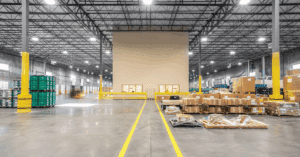Trade negotiators have come to an agreement on key areas of contention in the new USMCA trade policy. Talks in the U.S. had been stalled due to the trade deal’s stance on Mexican auto labor rule enforcement. Now, however, an agreement has been reached and the deal is set to move forward.
The Trump Administration had signed the USMCA deal back in November, 2018; but House lawmakers have not been ready to pass the deal without assurances of labor rule enforcement in Mexico. In the U.S., the legislative branch has Constitutional power to regulate international trade (including tariffs, trade agreements, and other factors influencing U.S. commerce). For the current USMCA deal, the House has made it clear that there must be strict enforcement of Mexico’s autoworkers earning a minimum $16 per hour wage before they would vote on the deal. Previous deal drafts stated that the U.S. should have enforcement capabilities over Mexican auto-manufacturers, but Mexico did not approve.
Negotiators have finally come to an agreement. Mexico will allow neutral, third-party representatives to accompany U.S. and Mexican regulators. There are processes in case Mexico is not compliant as well.
Mexico had ratified the deal in June 2019 and currently have expressed concerns at further recent U.S. changes. U. S. Trade Representative Robert Lighthizer requested updated definitions for what constitutes North American steel and aluminum. Mexico was not in favor of the change but has agreed to tighter steel rules after five years.
So far, the deal has not been brought to the House floor for a vote, but lawmakers are expected to soon – now that an agreement was made. Once the measure passes in the U.S. House, Canadian Prime Minister, Justin Trudeau, has said he will bring the deal to a vote in Canada. Until then, the USMCA’s future remains uncertain.
Are you planning for this regulatory change? Talk with us about your logistics needs! LEARN MORE!



